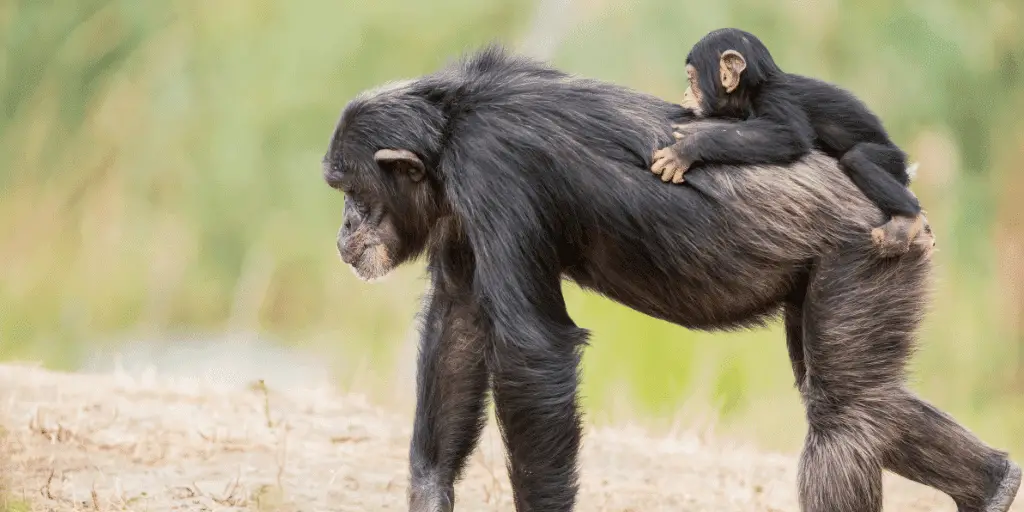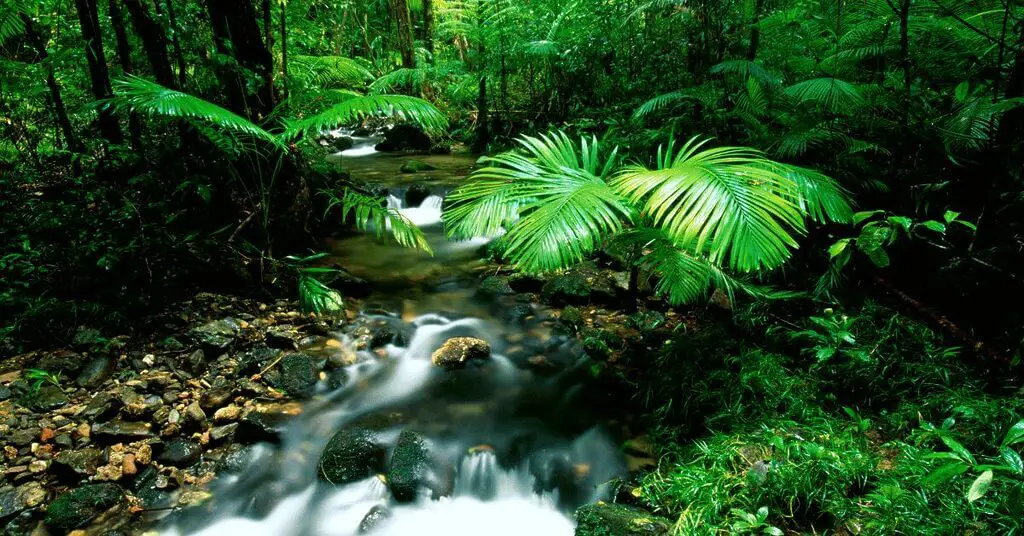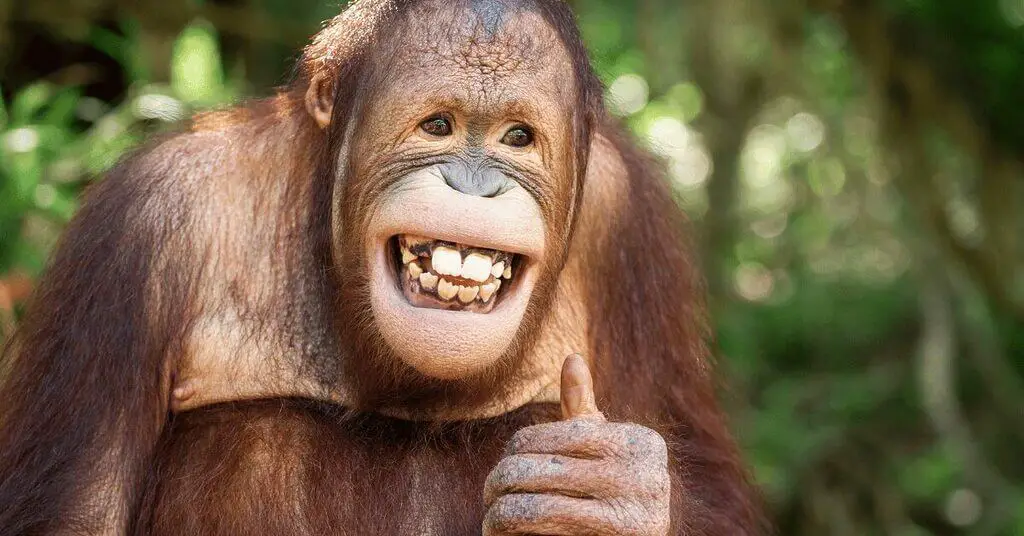Rainforests are home to an astounding array of animals, each uniquely adapted to thrive in these lush, complex ecosystems. From the forest floor to the canopy, rainforests support an estimated 50% of the world’s species, including a fascinating variety of mammals, birds, invertebrates, reptiles, and amphibians.
These animals possess a wide range of adaptations that enable them to navigate the dense vegetation, find food, and protect themselves from predators. Despite their incredible diversity, many rainforest animals are currently threatened with extinction due to habitat loss, poaching, and climate change, making conservation efforts crucial for their survival.
Quick Answer: Rainforests are home to an incredible diversity of animals, including:
- Mammals: jaguars, orangutans, sloths, gorillas
- Birds: toucans, harpy eagles, macaws, hummingbirds
- Reptiles and amphibians: anacondas, poison dart frogs, red-eyed tree frogs
- Invertebrates: butterflies, ants, spiders, beetles
List of Rainforest Animals
Rainforests are home to an astounding variety of animals, each uniquely adapted to thrive in these lush, complex ecosystems. From the forest floor to the canopy, rainforests teem with life, supporting an estimated 50% of the world’s species. In this section, we’ll explore the diverse array of mammals, birds, reptiles, amphibians, and invertebrates that call rainforests their home.
Key Takeaways:
- Rainforests are home to an astounding variety of mammals, birds, reptiles, amphibians, and invertebrates, each uniquely adapted to thrive in these lush, complex ecosystems.
- Rainforest animals possess a wide array of unique adaptations, bizarre behaviors, and record-breaking characteristics that enable them to navigate and flourish in the competitive rainforest environment.
- Many rainforest animals are currently threatened with extinction due to habitat loss, poaching, and climate change, making conservation efforts crucial for protecting these species and their habitats.
Mammals

Rainforest mammals come in all shapes and sizes, from tiny mouse lemurs to massive gorillas. Many have developed specialized adaptations that allow them to navigate the dense vegetation with ease. For example, the silky anteater has sharp claws and a prehensile tail that enable it to climb trees in search of its insect prey.
Other mammals, like the jaguar, rely on camouflage to blend in with their surroundings and stalk their prey undetected. These powerful cats are apex predators, playing a crucial role in maintaining the delicate balance of the rainforest ecosystem.
Primates, such as orangutans and spider monkeys, are also well-adapted to life in the trees. Their long, flexible limbs and grasping hands and feet allow them to move through the canopy with incredible agility. Many primates live in complex social groups, communicating through a variety of vocalizations and body language.
Sadly, many rainforest mammals are facing the threat of extinction due to habitat loss and poaching. Species like the mountain gorilla and the Sumatran tiger are critically endangered, with only a few hundred individuals remaining in the wild. Conservation efforts are crucial to protecting these magnificent creatures and their rainforest homes.
Birds
Rainforests are a birdwatcher’s paradise, home to an incredible diversity of avian species. From the iconic toucan with its oversized, colorful beak to the majestic harpy eagle, rainforest birds come in a dazzling array of shapes, sizes, and colors.
Many rainforest birds have developed specialized adaptations that allow them to thrive in this unique environment. The keel-billed toucan, for example, has a lightweight, honeycombed beak that allows it to reach fruit and berries in the high branches of trees.
The hummingbird, on the other hand, has a long, slender beak and a tongue that can lick up to 13 times per second, perfect for sipping nectar from rainforest flowers.
Birds play vital roles in the rainforest ecosystem, acting as pollinators, seed dispersers, and pest controllers. The scarlet macaw, with its vibrant red, yellow, and blue plumage, is a key seed disperser, helping to maintain the diversity of rainforest plant life.
Unfortunately, many rainforest birds are threatened by habitat loss, climate change, and the illegal pet trade. The great green macaw, for instance, is critically endangered due to deforestation and the capture of wild birds for the pet market. Conservation efforts, such as protected areas and captive breeding programs, are essential to ensure the survival of these magnificent creatures.
Reptiles and Amphibians

The humid, often aquatic environments of rainforests are home to a fascinating array of reptiles and amphibians. From the giant green anaconda, the world’s heaviest snake, to the tiny poison dart frog, these creatures come in an astonishing variety of shapes, sizes, and colors.
Many rainforest reptiles and amphibians have developed unique adaptations to cope with the challenges of their environment. The red-eyed tree frog, for example, has sticky toe pads that allow it to cling to leaves and branches, while the Surinam toad has a flattened body that helps it blend in with the leaf litter on the forest floor.
Some rainforest reptiles and amphibians are known for their potent toxins. The golden poison frog, native to the rainforests of Colombia, is one of the most poisonous animals on Earth. Its skin secretions contain enough toxins to kill up to 20,000 mice or 10 adult humans.
Reptiles and amphibians play important roles in the rainforest ecosystem, acting as both predators and prey. The green iguana, for instance, helps to disperse seeds through its droppings, while the caiman acts as a top predator, helping to control populations of fish and other aquatic animals.
Like many rainforest animals, reptiles and amphibians are threatened by habitat loss, pollution, and the illegal pet trade. The Amazon river turtle, for example, is heavily exploited for its meat and eggs, leading to a significant decline in its population. Conservation efforts, such as protected areas and captive breeding programs, are crucial to ensuring the survival of these fascinating creatures.
Fascinating Rainforest Animal Facts
Rainforest animals are not only diverse but also possess a wide array of unique adaptations, bizarre behaviors, and record-breaking characteristics that enable them to thrive in the complex and competitive rainforest environment. From the tiniest insects to the largest mammals, these creatures have evolved to survive and flourish in one of the most biodiverse ecosystems on Earth.
Unique Adaptations of Rainforest Animals
One of the most remarkable aspects of rainforest animals is their incredible adaptations that allow them to navigate and thrive in the dense, humid habitat. Camouflage is a common adaptation, with many species possessing colors and patterns that blend seamlessly with their surroundings, such as the leaf-tailed gecko, which resembles a dead leaf.
Other animals, like the glass frog, have transparent skin that reveals their internal organs, making them nearly invisible against the leaves they rest on. Mimicry is another adaptation, with some species imitating the appearance or behavior of other animals to deter predators or attract prey.
Venomous defenses are also prevalent among rainforest creatures, with species like the poison dart frog secreting toxins through their skin to ward off predators. Some animals have developed specialized appendages, such as the aye-aye’s elongated middle finger, which it uses to extract insects from tree bark.
Enhanced senses are another common adaptation, with many species relying on acute vision, hearing, or smell to navigate the dense foliage and locate food or mates. These adaptations have evolved over millions of years in response to the challenges posed by the rainforest habitat, contributing to the incredible biodiversity and ecological balance of these ecosystems.
Bizarre Behaviors of Rainforest Creatures
In addition to their unique adaptations, rainforest animals exhibit a wide range of bizarre behaviors that have evolved in response to the challenges and opportunities presented by their environment. These behaviors often play crucial roles in the survival and reproductive success of the species.
One example is the elaborate courtship ritual of the male bird of paradise, which involves intricate dances, vocalizations, and displays of vibrant plumage to attract a mate. Another is the unique hunting strategy of the jaguar, which uses its powerful jaws and stealthy movements to ambush prey from trees or water.
Social interactions among rainforest animals can also be surprising, such as the complex communication systems of chimpanzees, which use a variety of vocalizations, facial expressions, and gestures to convey information and maintain group dynamics.
These behaviors have been the subject of extensive scientific research, providing valuable insights into the evolution and ecology of rainforest species.
Record-Breaking Rainforest Animals
Rainforests are home to some of the most impressive record-breaking animals on the planet, from the minuscule to the colossal. The Goliath birdeater, for instance, is the world’s largest spider, with a leg span of up to 11 inches and a weight of over 6 ounces. On the other end of the spectrum, the pygmy marmoset is the smallest monkey in the world, measuring just 5 inches in length and weighing a mere 4 ounces.
Other record-breakers include the harpy eagle, which has the largest talons of any living eagle, and the green anaconda, which is the heaviest snake in the world, weighing up to 550 pounds. These extraordinary traits have evolved in response to the unique pressures and challenges of the rainforest environment, contributing to the species’ survival and ecological roles.
Symbiotic Relationships in the Rainforest

The complex web of interactions within the rainforest ecosystem is further exemplified by the numerous symbiotic relationships that exist between various species. These relationships, which include mutualisms, commensalisms, and parasitism, have evolved over time and play crucial roles in maintaining the delicate balance of the rainforest.
One well-known example of mutualism is the relationship between leafcutter ants and the fungus they cultivate. The ants collect leaves and use them to grow a specific type of fungus, which serves as their primary food source. In return, the fungus benefits from the ants’ constant care and protection.
Commensalism can be observed in the relationship between bromeliads and the various species of frogs that use these plants as shelter. The frogs benefit from the moisture and protection provided by the bromeliad’s tank-like structure, while the plant is unaffected by the frog’s presence.
Parasitism is also prevalent in the rainforest, with many species of parasitic plants, insects, and even fungi that rely on host organisms for survival. These intricate symbiotic relationships highlight the interconnectedness of rainforest species and the delicate balance that exists within these ecosystems.
Endangered Rainforest Species and Conservation Efforts
Despite their incredible adaptations and ecological importance, many rainforest animals are currently threatened with extinction due to a range of anthropogenic factors, including habitat loss, poaching, and climate change. Some of the most critically endangered species include the Sumatran rhinoceros, the Javan leopard, and the mountain gorilla, with populations numbering in the hundreds or even less.
Conservation efforts are crucial for protecting these species and their habitats, and many organizations are working tirelessly to implement various strategies. Captive breeding programs aim to increase population numbers and genetic diversity, while habitat restoration projects focus on rehabilitating degraded rainforest areas.
Community-based conservation initiatives involve local communities in the protection and sustainable management of rainforest resources, recognizing the importance of human-wildlife coexistence. These efforts are vital for preserving the incredible biodiversity of rainforests and preventing the potentially catastrophic consequences of species extinctions on the ecosystem as a whole.
Exploring the Rainforest Habitat
Rainforests are among the most fascinating and diverse ecosystems on Earth, home to an incredible array of animal and plant life. These lush, tropical forests are characterized by high rainfall, warm temperatures, and a complex structure that supports a wide range of species. However, rainforest habitats are also under threat from various human activities, which can have devastating impacts on the animals that call these forests home.
Layers of the Rainforest
One of the most distinctive features of rainforests is their vertical layering, with each layer hosting a unique community of animals and plants adapted to the specific conditions found there. The four main layers of the rainforest are:
- Forest Floor: This dark, damp layer receives little sunlight and is home to decomposers, such as fungi and bacteria, as well as larger animals like tapirs and jaguars.
- Understory: This layer is characterized by dense vegetation, including shrubs, saplings, and small trees. Animals found here include snakes, lizards, and many species of insects.
- Canopy: The canopy is a dense layer of leaves and branches formed by the crowns of mature trees, typically 60-130 feet above the ground. This layer is home to a wide variety of animals, including monkeys, sloths, and birds.
- Emergent Layer: This layer consists of the tallest trees that rise above the canopy, reaching heights of up to 200 feet. Animals found here include birds of prey, such as harpy eagles, and bats.
Each layer has its own unique set of environmental conditions, such as the amount of light, temperature, and moisture, which influence the types of animals and plants found there.
For example, the forest floor is dark and damp, while the emergent layer is exposed to intense sunlight and high winds. Animals in each layer have adapted to these conditions in various ways, such as the development of special features like the prehensile tails of monkeys for climbing or the large eyes of nocturnal animals for navigating in low light.
Importance of Rainforests for Animal Diversity
Rainforests are known for their incredible biodiversity, hosting a disproportionately high number of the world’s animal and plant species. Although tropical rainforests cover only about 6% of the Earth’s surface, they are home to an estimated 50-80% of all terrestrial species. This high level of diversity is due to several factors, including:
- The complex structure of the rainforest, with its multiple layers and niches, provides a wide range of habitats for different species.
- The abundant rainfall and warm temperatures support high levels of plant growth, which in turn provides food and shelter for a diverse array of animals.
- The relatively stable climate of rainforests, with little seasonal variation, allows species to specialize and adapt to specific niches over evolutionary time.
This diversity is crucial for the resilience and stability of rainforest ecosystems, as it allows them to better withstand and recover from disturbances such as droughts, fires, or disease outbreaks. A diverse ecosystem is more likely to have species that can fill important ecological roles if other species are lost, maintaining the overall functioning of the ecosystem.
However, the high diversity of rainforests also makes them particularly vulnerable to the impacts of human activities, as the loss of even a small area of forest can have a disproportionate impact on global biodiversity.
Threats to Rainforest Habitats and Their Impact on Animals

Despite their ecological importance, rainforests are under threat from a range of human activities, which can have devastating impacts on the animals that call these habitats home. Some of the main threats to rainforests include:
- Deforestation: The clearing of rainforests for agriculture, logging, and mining is the leading cause of rainforest loss, with an estimated 18 million acres of forest being lost each year. This destruction of habitat can lead to the loss of entire species, as well as the fragmentation of remaining forest patches, which can isolate animal populations and disrupt important ecological processes.
- Climate change: Rising temperatures and changes in rainfall patterns due to climate change can have significant impacts on rainforest ecosystems, altering the distribution and abundance of plant and animal species. This can lead to the loss of suitable habitat for many species, as well as the disruption of complex interactions between species, such as those between plants and their pollinators.
- Unsustainable resource extraction: The unsustainable harvesting of timber, wildlife, and other forest products can lead to the depletion of important resources for animals, such as food and shelter. This can have cascading effects throughout the ecosystem, as the loss of one species can impact many others that depend on it.
These threats can have particularly severe impacts on species that are already vulnerable due to factors such as limited geographic range, specialized habitat requirements, or slow reproductive rates. For example, the Sumatran rhinoceros, which is found only in the rainforests of Southeast Asia, has seen its population decline by over 80% in the past century due to a combination of habitat loss, poaching, and inbreeding.
Protecting Rainforest Ecosystems for Animal Conservation

Given the critical importance of rainforests for animal diversity and the severity of the threats they face, it is essential that we take action to protect and conserve these ecosystems. There are a variety of approaches to rainforest conservation, including:
- Protected areas: The establishment of national parks, wildlife reserves, and other protected areas can help to safeguard rainforest habitats and the species that depend on them. These areas can provide a refuge for threatened species, as well as a source of genetic diversity for future generations.
- Sustainable resource management: The development of sustainable practices for logging, agriculture, and other resource extraction activities can help to minimize the impact of these activities on rainforest ecosystems. This can include techniques such as selective logging, agroforestry, and the use of certification schemes to promote sustainable production.
- Community-based conservation: Engaging local communities in the conservation and sustainable use of rainforest resources can help to create incentives for conservation and reduce the pressure on these ecosystems. This can include initiatives such as ecotourism, which can provide alternative livelihoods for local people while also supporting conservation efforts.
There have been many successful examples of rainforest conservation projects that have had positive impacts on animal populations and local communities.
For instance, the establishment of the Gunung Palung National Park in Indonesia has helped to protect important habitat for the endangered orangutan, while also providing opportunities for sustainable livelihoods for local people through ecotourism and sustainable forestry.
However, the scale and complexity of the threats facing rainforests means that protecting these ecosystems will require a coordinated global effort.
International agreements such as the Convention on Biological Diversity and the United Nations Framework Convention on Climate Change provide important frameworks for cooperation and action on rainforest conservation. Partnerships between governments, conservation organizations, and local communities can also play a critical role in supporting conservation efforts on the ground.
Ultimately, the fate of rainforest animals will depend on our ability to protect and conserve the habitats they depend on. By taking action to address the threats facing these ecosystems and support conservation efforts, we can help to ensure a future for the incredible diversity of life found in the world’s rainforests.
Frequently Asked Questions
What is the biggest threat to rainforest animals?
Habitat loss due to deforestation is the biggest threat to rainforest animals, as it destroys their homes and food sources, leading to population declines and potential extinction.
How do rainforest animals adapt to the dense vegetation?
Rainforest animals have evolved unique adaptations to navigate the dense vegetation, such as the sharp claws and prehensile tails of silky anteaters, which enable them to climb trees efficiently.
What roles do birds play in the rainforest ecosystem?
Birds play vital roles in the rainforest ecosystem as pollinators, seed dispersers, and pest controllers, helping to maintain the diversity and balance of the forest.
How do rainforest reptiles and amphibians protect themselves from predators?
Many rainforest reptiles and amphibians protect themselves from predators through camouflage, mimicry, or by secreting toxins, such as the golden poison frog, which has enough venom to kill up to 20,000 mice.
What can individuals do to help protect rainforest animals?
Individuals can help protect rainforest animals by supporting conservation organizations, reducing their consumption of products that contribute to deforestation, and raising awareness about the importance of these ecosystems and the threats they face.
- Wild Animals in Costa Rica: A Biodiverse Paradise - 2024-05-16
- Animals That Live in the Rainforest: A Diverse Wonder - 2024-05-15
- Animals in the Safari: A Captivating African Adventure - 2024-05-15








